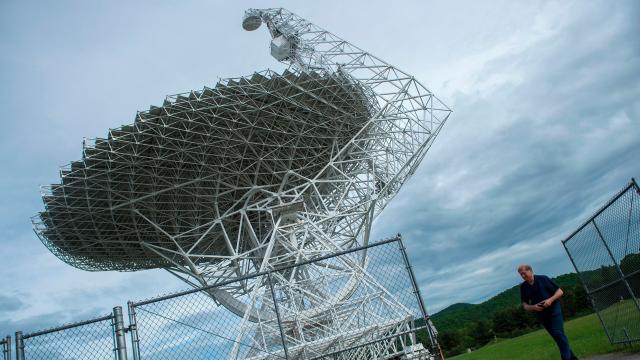Greenbank, W. Va., is home to the world’s largest, fully steerable radio telescope. With a dish larger than a football field, it can capture the most minute signals from space. The tiny West Virginia town is also home to the National Radio Quiet Zone, a 13,000-square-mile (33,669 square kilometre) area where cell service doesn’t exist, Wi-Fi is banned, and home broadband is as slow as dial-up. And those who live within 10 miles of the telescope are banned from using Bluetooth devices, microwaves, cordless phones, and wireless speakers, according to the New York Times.
The quiet zone has been in effect since 1958 to protect the radio equipment from interference, and crosses multiple counties and cities in Virginia and West Virginia. But Greenbank is the epicentre of the NRQZ. By today’s standards, the 143 residents of Greenbank technically have internet, but the lack of modern technology in their daily lives is akin to living in the ‘90s: landline phones, no texting, and sometimes fights over who gets to use the computer. They’re a few of the nearly 15 million Americans living in rural areas who lack access to high-speed internet—except the restriction in Greenbank is government-mandated.
I remember growing up without smartphones and high-speed internet. But living in a suburban area meant I was inevitably sucked into social media, message boards, instant messaging, and texting. It often feels like I grew up in a completely different world, even though that was only about 15 years ago. For NRQZ residents like Marilyn Creager and Charity Warder, growing up in the 21st century without current technology means being completely removed from pivotal parts of modern culture. Creager told the Times that, upon entering college, she didn’t follow the same texting rules as her friends; they were annoyed that she didn’t immediately respond to their messages.
“I was suddenly tethered by my phone to a virtual world, and I didn’t enjoy it,” Creager said.
Warder leaves for college in the fall. Like Creager, she could find herself struggling to adjust to a fast-paced, digital world where everyone is plugged in 24/7. It’s a stark difference from the relaxed nights she spends with her family chatting in the living room, not a cell phone in sight. Her mother says that “communication is a dying art because kids don’t talk.”
That sentiment is debatable, but a lack of reliable internet and cell service does have its downsides, as the Times notes. It’s harder to call for help if you’re stranded on the side of the road. Electronically submitting homework assignments or college applications becomes a game of chance. Some recent studies have shown that a poor internet connection can have an adverse effect on a student’s academic success. And even though cell phone companies like T-Mobile have rolled out a pilot program in rural areas for 5G home internet, many who live within the NRQZ will never benefit from it because of the 62-year-old ban on wireless technology.
The Green Bank Observatory has been operating as an independent institution since October 2016, relying on private funding to meet its annual $US10 ($15) million operating costs. Currently, it plays a key part in project Breakthrough Listen, which scans space for signs of extraterrestrial life. It might seem unfair to have to forfeit wireless technology just so scientists can try to find some aliens, but both Creager and Warder not only loved their upbringing sans some modern tech—they prefer it.
